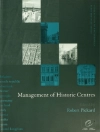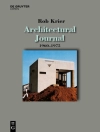Germany of the 1920s offers a stunning moment in modernity, a time when surface values first became determinants of taste, activity, and occupation: modernity was still modern, spectacle was still spectacular. Janet Ward’s luminous study revisits Weimar Germany via the lens of metropolitan visual culture, analyzing the power that 1920s Germany holds for today’s visual codes of consumerism.
Tabla de materias
List of Illustrations
Acknowledgments
Introduction. Modern Surface and Postmodern Simulation: A Retrospective Retrieval
Agendas of Surface and Simulacrum
Weimar Surfaces Now
Tactility in the City
Exhibiting Superficies
Philosophies of Counterfeit
Resistances to Weimar Surface
Surface, Academy, and World
1. Functionalist Façades: The Reformation of Weimar Architecture
The Building’s New Face
Decoration Do’s and Don’ts
Brave New World
Glass Culture
The Pains of Tabula Rasa
Surface Art at Home
Fashioning the Female Body
2. Electric Stimulations: The Shock of the New Objectivity in Weimar Advertising
Advertising as Power
Electric Modernity
The Architecture of Light
Shock Treatments
‘Light Lures People, ‘ Rejecting the Modern
The Embrace of the Avant-Garde
Postmodernity and the Space of Advertising
3. Into the Mouth of the Moloch: Weimar Surface Culture Goes to the Movies
From Caligari-Effect to Film-Set Omnipotence
Kracauer versus the Weimar Film City
Celebratory Film Streets
The Weimar Movie Palaces: Façades on Façades
‘The Total Artwork of Effects, ‘ Cinema and the Secularization of Ritual
4. The Display Window: Designs and Desires of Weimar Consumerism
The Phantasmagoria of Selling
Through the Looking Glass
The Opening in the Wall
Window Techniques
The Display Window as Mechanical-Age Artwork
Transparencies of Truth and Lie
Mannequins on Both Sides of the Glass
The Murderer at the Window
Post-Wall Re-Creations
Appendix: Selected Weimar Periodicals and Newspapers
Notes
Illustration Sources
Index
Sobre el autor
Janet Ward is Associate Professor of German Studies at the University of Colorado, Boulder. She is the coeditor of Agonistics: Arenas of Creative Contest (1997), co-editor of the forthcoming German Studies in the Post-Holocaust Age: The Politics of Memory, Identity, and Ethnicity (2001) and is currently writing a book on post-Wall architecture in Berlin












